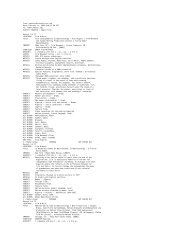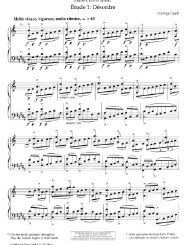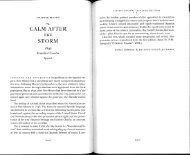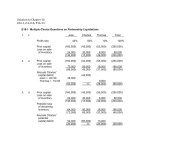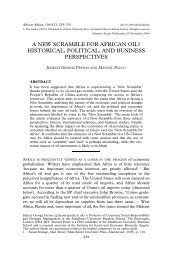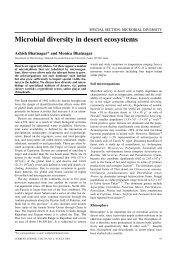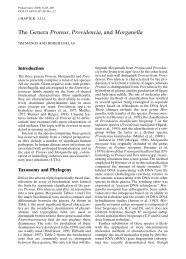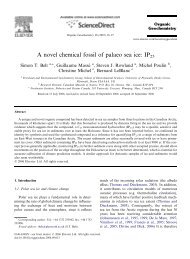Analysis by Key: Another Look at Modulation
Analysis by Key: Another Look at Modulation
Analysis by Key: Another Look at Modulation
You also want an ePaper? Increase the reach of your titles
YUMPU automatically turns print PDFs into web optimized ePapers that Google loves.
only serves to make musical time a more powerful symbolic represent<strong>at</strong>ion of<br />
human temporal experience. And further, a piece th<strong>at</strong> struggles to achieve its<br />
tonic presents a world of sound and feeling very different from one where the<br />
tonic is asserted as a given from the outset.<br />
Ex. 2 Chopin: Prelude, Op.28, No. 18<br />
Allegro molto<br />
+Aye J: : ,> ag, '/ : |<br />
augmented 4th<br />
t) tb e 5 b > _ * t<br />
The Tonic as M<strong>at</strong>nx<br />
X. *<br />
ANALYSIS BY KEY<br />
During the first nine or so bars of another Chopin Prelude, No. 24 in D minor,<br />
there is no diminished fifth C# -G to specify D as the tonic pitch. Th<strong>at</strong> the key of<br />
D minor is never in doubt during these bars results from the ever-present D<br />
minor triad arpeggi<strong>at</strong>ed in both the left-hand ostin<strong>at</strong>o and the melodic line; th<strong>at</strong><br />
the few non-harmonic notes ali belong to the D minor scale adds further<br />
confirm<strong>at</strong>ion. If we look a bit further - say up to b.21 - we shall see th<strong>at</strong> the<br />
tonicized harmonies are the opening D minor, the F major of b. 15 and the A<br />
minor of b. 19, forming a huge expansion of the same arpeggio.<br />
Despite its complex and unusual - perhaps unique - tonal plan, the Prelude<br />
sustains its key with a minimum of help from the diminished fifth on the leading<br />
note. Indeed in seventy-seven bars of highly chrom<strong>at</strong>ic music, C," occurs only<br />
twice: before the reprise in b. 50 (introduced enharmonically as DS), and in the<br />
final cadential dominant, b.64 (not counting a few rapid passing notes of no<br />
harmonic significance in bs 55-6). D minor is securely established as a key<br />
because the D minor chord so clearly forms the m<strong>at</strong>rix th<strong>at</strong> gener<strong>at</strong>es the<br />
ostin<strong>at</strong>o figure, the melodic line and the large-scale harmonic structure of the<br />
Prelude's extended opening phase (bs 1-20).<br />
Central to Schenker's work is the notion th<strong>at</strong> the tonic triad, an image of the<br />
overtone series gener<strong>at</strong>ed <strong>by</strong> the tonic note, functions as a m<strong>at</strong>rix- the source of<br />
the Fundamental Structure th<strong>at</strong> governs large-scale harmony (through the bass<br />
arpeggio) and melody (through the Fundamental Line) as well as the ultim<strong>at</strong>e<br />
source of the middleground structures and foreground details th<strong>at</strong> grow out of<br />
the Fundamental Structure. As m<strong>at</strong>rix, the tonic triad has rhythmic properties:<br />
it defines the beginning and end of complete and self-contained harmonic and<br />
melodic progressions; it also provides the found<strong>at</strong>ion for form and design, since<br />
motivic and them<strong>at</strong>ic elements always connect (usually quite closely) to tonal<br />
structure. As Fred Lerdahl and Ray Jackendoff write, 'the tonic is in some sense<br />
MUSIC ANALYSIS 6: 3, 1987 291



